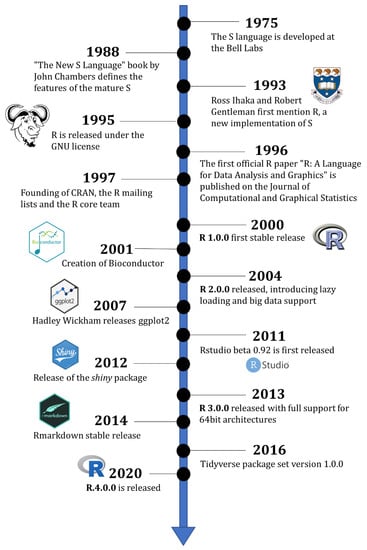The Greatest Guide To Bioinformatics Tutor
The Greatest Guide To Bioinformatics Tutor
Blog Article
The Ultimate Guide To Bioinformatics Tutor
Table of Contents6 Easy Facts About Bioinformatics Tutor Explained4 Simple Techniques For Bioinformatics Tutor4 Easy Facts About Bioinformatics Tutor DescribedSome Of Bioinformatics TutorBioinformatics Tutor Things To Know Before You Buy
Of the total individuals involved in the training, 80% were students from public greater education and learning organizations, while the staying 20% came from exclusive establishments. To qualify for a certificate of participation, pupils were needed to go to at the very least 90% of the complete training hours. As a result of this need, an outstanding 95% of the participants successfully obtained their certificates, having not just satisfied the minimum attendance criteria yet additionally completed all appointed tasks throughout the training.
Throughout the elevation of the COVID-19 pandemic, particularly in between June and August 2020, the project team was tasked with organizing specialized training in bioinformatics. This training was especially focused on pupils from the study group Core for Research in Applied Computer at the Federal College of Pará (UFRA) The adjustment to remote discovering platforms due to the pandemic developed a chance to check out brand-new training approaches and digital devices that improved both reach and effectiveness.
This course was made to supply an accessible yet comprehensive summary of Artificial Knowledge techniques, specifically as used in bioinformatics (Bioinformatics Tutor). This online format enabled engagement from students throughout Brazil, many of whom might not have had the chance to attend in-person sessions.
Fascination About Bioinformatics Tutor
Around 50% of the complete training hours were dedicated to useful activities where pupils built intelligent versions and applications in a variety of clinical domains, including genes, molecular biology, and environmental information analysis. These platforms allowed students to involve in real-time data adjustment, model training, and algorithm testing.
The program attracted 80 participants in total amount. Sixty of them were affiliated with numerous higher education institutions in the state of Pará, while the staying twenty came from establishments situated in five various other Brazilian states. This broad geographical depiction highlighted the national interest in bioinformatics and the growing need for specialized skills around. By introducing Artificial Knowledge in a practical and relevant context, the initiative offered to bridge the space between concept and real-world application, supplying trainees with a solid foundation for future research or work in the area.
The training initiative created component of a more comprehensive academic outreach initiative referred to as the Bioinformatics when driving job. This task has, throughout the years, introduced lots of students to the globe of bioinformatics and computational biology. The events held under this umbrella campaign have taken area throughout multiple regions and years, as summarized in Table 1 (Listing of events, areas, years, and complete varieties of trainees and trainers)
One of the most impressive outcomes of the Bioinformatics when driving initiative has actually been its payment to the growth of decentralized research groups. Numerous of these groups, originally brought together by their participation in training occasions, have actually considering that gone on to create independent scientific study in cooperation with regional academic institutions. The training not only promoted scientific reasoning within the context of bioinformatics however likewise sparked collaborative partnerships that expanded past the training setting. These collaborations have websites brought about enhanced local clinical productivity and contributed meaningfully to the advancement of the broader bioinformatics neighborhood in Brazil.
Bioinformatics Tutor - Questions
The task itself was conceived and organized by MB and RR, who supervised the planning and execution of each action. Lectures were delivered by a multidisciplinary team including MB, FA, EF, KP, JS, DM, SN, LP, LG, RR, a/c, and ih. The same team, excluding IH and RR, additionally acted as article tutors for the functional training modules. Financing for the job was given with the grant 88887.200562/ 2018-00 from CAPES. The authors extend their thankfulness to every person who added to the awareness of this job, whether directly or indirectly, since its creation.
The Federal University of Pará's Workplace of Research study (PROPESP/UFPA) additionally gave economic assistance, especially for the manufacturing of the final manuscript. The authors state no commercial or financial conflicts of passion that might have affected the research. All viewpoints and analyses shared in this post are only those of the writers and do not necessarily reflect those of their particular establishments, the publisher, editors, or reviewers included in the magazine process.

About Bioinformatics Tutor
From a pedagogical point of view, the mentor technique made use of in the training was deliberately interactive. Classes were conducted in a manner that encouraged trainee participation and discussion, exceeding memorizing memorization to explore how concepts are developed, applied in day-to-day live, and examined in academic settings. The educational viewpoint concentrated on supporting both strong and having a hard time students, providing individualized support, and building self-confidence via sustained mentorship and perseverance.

Each team, being composed of approximately 36 participants, was sustained by 3 advisors-- a lot of whom were postdoctoral scientists with specific expertise. These mentors not just aided design the team tasks yet also facilitated their implementation, ensuring that each research study concern was both properly challenging and relevant. The goal was to offer a biologically practical context that individuals could check out through open-ended goals and access to curated datasets.
For added understandings into the method and results of this project-based knowing technique, viewers are routed to S1 Text, which includes detailed summaries of the instructional framework, assessment approaches, and task themes used in the training sessions.
Get This Report about Bioinformatics Tutor
Of the total participants involved in the training, 80% were pupils from public higher education establishments, while the continuing to be 20% came from personal establishments. To certify for a certificate of engagement, pupils were required to go to at least 90% of the complete training try here hours. Notably, past the pupils that signed up in the training sessions, 7 skilled trainers took part in supplying the training courses, while 3 dedicated research professors coordinated the general training process. Around 50% of the complete training hours were dedicated to practical activities where students built intelligent versions and applications in an array of clinical domains, consisting of genes, molecular biology, and ecological data analysis. The training not just fostered scientific reasoning within the context of bioinformatics but likewise stimulated collective relationships that extended beyond the training environment.
Report this page